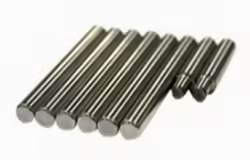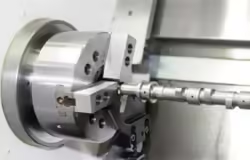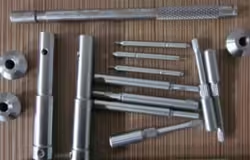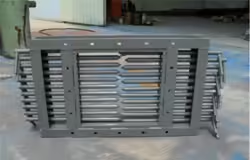
How to Choose the Right Steel Billet Specification
Introduction
Selecting the right steel billet specification is crucial for the success of any manufacturing or construction project. Steel billets, as semi-finished casting products, are the starting point for a wide range of steel products, including bars, rods, and sheets. The specifications of these billets directly impact the quality, performance, and durability of the final products. In this comprehensive guide, we will delve into the factors that influence steel billet specifications, how to choose the right one for your project, and why these choices matter for your project’s success.
Understanding Steel Billet Specifications
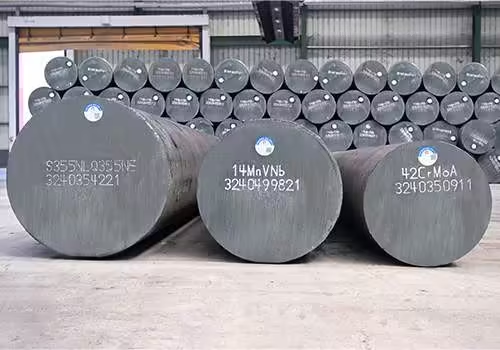
What Are Steel Billets?
Steel billets are the raw materials produced in steel mills and are the precursors to a variety of steel products. They are typically rectangular, square, or round in cross-section and are created through a casting process. The billets are then further processed through rolling or forging to produce finished steel products.
Key Components of Steel Billet Specifications
Steel billet specifications are defined by several key parameters, each of which influences the properties of the final product. These parameters include:
- Chemical Composition: The specific elements present in the steel billet, such as carbon, manganese, silicon, sulfur, and phosphorus. The chemical composition determines the steel’s strength, hardness, ductility, and corrosion resistance.
- Size and Shape: The dimensions of the billet, including length, width, height, and cross-sectional area. The size and shape are important for compatibility with subsequent processing methods.
- Mechanical Properties: Characteristics such as tensile strength, yield strength, and elongation, which affect how the steel behaves under stress.
- Surface Quality: The finish of the billet’s surface, including any defects such as cracks, scabs, or scale, which can impact the quality of the finished product.
- Internal Quality: Refers to the absence of internal defects like voids, inclusions, or segregation, which can weaken the steel.
Factors to Consider When Choosing Steel Billet Specifications
Application and End-Use Requirements
The first step in choosing the right steel billet specification is to consider the specific application and end-use of the steel product. Different applications require different properties from the steel, which are determined by the billet’s composition and processing.
Examples:
- Construction: For structural steel used in construction, high tensile strength and ductility are essential, so a billet with the appropriate carbon and manganese content would be ideal.
- Automotive: For automotive parts, where both strength and toughness are critical, a billet with specific alloying elements such as chromium or nickel may be required.
- Tool Manufacturing: For tools, high hardness and wear resistance are necessary, so billets with higher carbon content and additional alloying elements are preferred.
Industry Standards and Regulations
Steel billet specifications are often governed by industry standards and regulations, which ensure consistency and quality across different suppliers and products. Familiarizing yourself with the relevant standards is crucial when selecting steel billets.
Common Standards:
- ASTM (American Society for Testing and Materials): Provides specifications for different types of steel billets based on their intended use.
- EN (European Standards): European standards that specify the requirements for various steel grades and forms.
- JIS (Japanese Industrial Standards): Defines the specifications for steel billets used in Japanese industries.
These standards cover aspects such as chemical composition, mechanical properties, and testing methods to ensure that the steel billets meet the necessary quality criteria.
Compatibility with Processing Techniques
The processing techniques used to convert billets into finished products also influence the choice of specifications. The steel billet must be compatible with the manufacturing process, whether it’s hot rolling, forging, or extrusion.
Processing Considerations:
- Hot Rolling: Requires billets with good ductility and a suitable cross-section to ensure smooth deformation during rolling.
- Forging: Demands billets with high toughness to withstand the forces applied during forging without cracking.
- Extrusion: Needs billets with specific chemical compositions to ensure that the material flows properly through the die.
Table: Comparison of Steel Billet Specifications by Application
| Application | Key Chemical Elements | Typical Mechanical Properties | Required Surface Quality | Industry Standards |
|---|---|---|---|---|
| Construction | Carbon, Manganese | High tensile strength, Ductility | Smooth, minimal defects | ASTM A36, EN 10025 |
| Automotive | Carbon, Chromium, Nickel | High toughness, Yield strength | High surface quality | ASTM A29, JIS G4051 |
| Tool Manufacturing | High Carbon, Vanadium | High hardness, Wear resistance | Smooth, defect-free | ASTM A681, EN ISO 4957 |
| Pipeline | Carbon, Manganese, Molybdenum | Corrosion resistance, Toughness | Moderate surface finish | API 5L, EN 10208 |
How Steel Billet Specifications Affect Final Product Quality
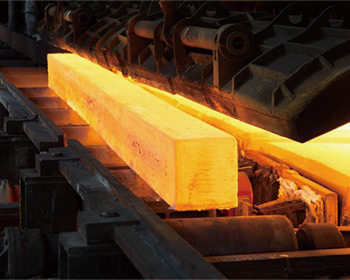
Impact on Mechanical Properties
The mechanical properties of the final steel product, such as its strength, toughness, and ductility, are directly influenced by the billet’s chemical composition and processing history. For example, a billet with higher carbon content will produce a harder, more brittle steel, which may be suitable for cutting tools but not for structural applications where flexibility is needed.
Influence on Surface and Internal Quality
Surface and internal quality defects in the billet can lead to significant problems in the final product, such as reduced strength, poor finish, and increased susceptibility to corrosion. Therefore, it is essential to choose billets with the appropriate surface and internal quality specifications for the intended application.
Common Defects to Watch For:
- Surface Cracks: Can lead to weaknesses in the final product, especially in structural applications.
- Inclusions: Non-metallic inclusions can create weak spots within the steel, compromising its integrity.
- Segregation: Uneven distribution of alloying elements can result in inconsistent properties across the final product.
Conclusion
Choosing the right steel billet specification is a critical decision that affects the performance, quality, and cost of the final product. By understanding the factors that influence billet specifications—such as the application, industry standards, and processing methods—you can make informed decisions that ensure the success of your project. Whether you’re manufacturing construction materials, automotive components, or industrial tools, selecting the appropriate steel billet specification is the first step toward achieving your desired results.
FAQ
What is a steel billet specification?
A steel billet specification is a set of criteria that define the chemical composition, mechanical properties, size, shape, and surface quality of a steel billet. These specifications ensure that the billet meets the requirements for its intended use.
How do I choose the right steel billet specification for my project?
Choosing the right specification depends on several factors, including the application, industry standards, and processing techniques. Consider the required mechanical properties, chemical composition, and quality standards for your specific project.
Why is the chemical composition of a steel billet important?
The chemical composition determines the steel’s mechanical properties, such as strength, hardness, and ductility. It also influences how the steel behaves during processing and its suitability for different applications.
What industry standards govern steel billet specifications?
Common industry standards include ASTM, EN, and JIS, which provide guidelines for the chemical composition, mechanical properties, and testing methods for steel billets. Adhering to these standards ensures consistency and quality.
How do surface and internal quality affect the final product?
Surface and internal defects in the billet can lead to weaknesses, poor finish, and reduced performance in the final product. It’s essential to choose billets with the appropriate quality specifications to avoid these issues.

